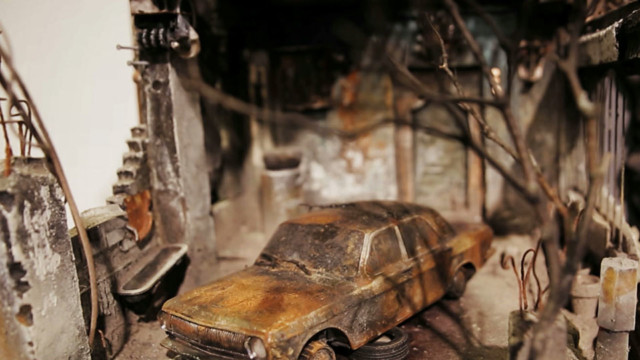For a refugee, the process of moving to a new country and starting again can be very difficult. A new exhibit at UNICEF offices in New York shows the struggles — and triumphs — of ten refugee families.
CGTN’s Nina Edwards met the refugee artists who designed it.
An underground school in Afghanistan, a bombed out home in Iraq and an abandoned dining room in Kenya. In all, there are ten stories of refugees who have resettled in the United States. The level of detail is incredible–places where children can sit and study, tiny books on the shelf, the wiring of electricity in the basement are all visible in a new exhibit titled, “Unpacked: Refugee Baggage.”
“It’s suitcases, hanging open, and here’s the emotional baggage that comes out of them,” said exhibit creator Mohamad Hafez.
He’s recreated the journeys of these refugees in intricate, miniature detail. Ahmed Badr–himself an Iraqi refugee–collected the stories contained within each suitcase.
“The reason I wanted to be involved–and the reason we came up with this idea–is to try to humanize the word ‘refugee’, and the word ‘migrant’, in the most tangible way possible, through art and through storytelling,” said co-creator Ahmed Badr.
These are the stories of lawyers, engineers, professors and journalists. Families and individuals, many escaping violence and war, but all living proof of the power of the human spirit.
“These are people, just like us, who, for no fault of their own, are often on the move from one country to another, seeking safety, seeking opportunities, seeking a safer and better life,” said UNICEF Communications Director Dan Thomas. “These aren’t people to be feared. They’re people like you and me and this is a way of having them tell their stories.”
“This suitcase actually represents my family’s story, the night that changed our lives forever,” said Badr, pointing to one part of the exhibit. “This depicts an event that happened on July 25, 2006, the night my house was bombed in Iraq.”
Fortunately, everyone in Ahmed’s family escaped, and they eventually resettled in the U.S.
“Every time I see [this suitcase], it obviously it brings back a painful memory, but at the same time, it’s just a reminder, a reminder of this terrible thing that happened but ultimately ended up changing our lives for the better,” he recalled.
Both Mohamad and Ahmed want to share refugee stories of struggle, but also of triumph, as the world observes International Migrants’ Day.
“We’re trying to provide a window, and once individuals look through that window, they get to see a vision and an experience that they’ve never really experienced before, and they literally get to see it and hear it,” explained Badr. “I think if more people thought of refugees and migrants as people who are not so different from them, then our world would be much different.”
They’re using art as a way to build bridges and show the human side of migration, unpacking one story at a time.
 CGTN America
CGTN America
